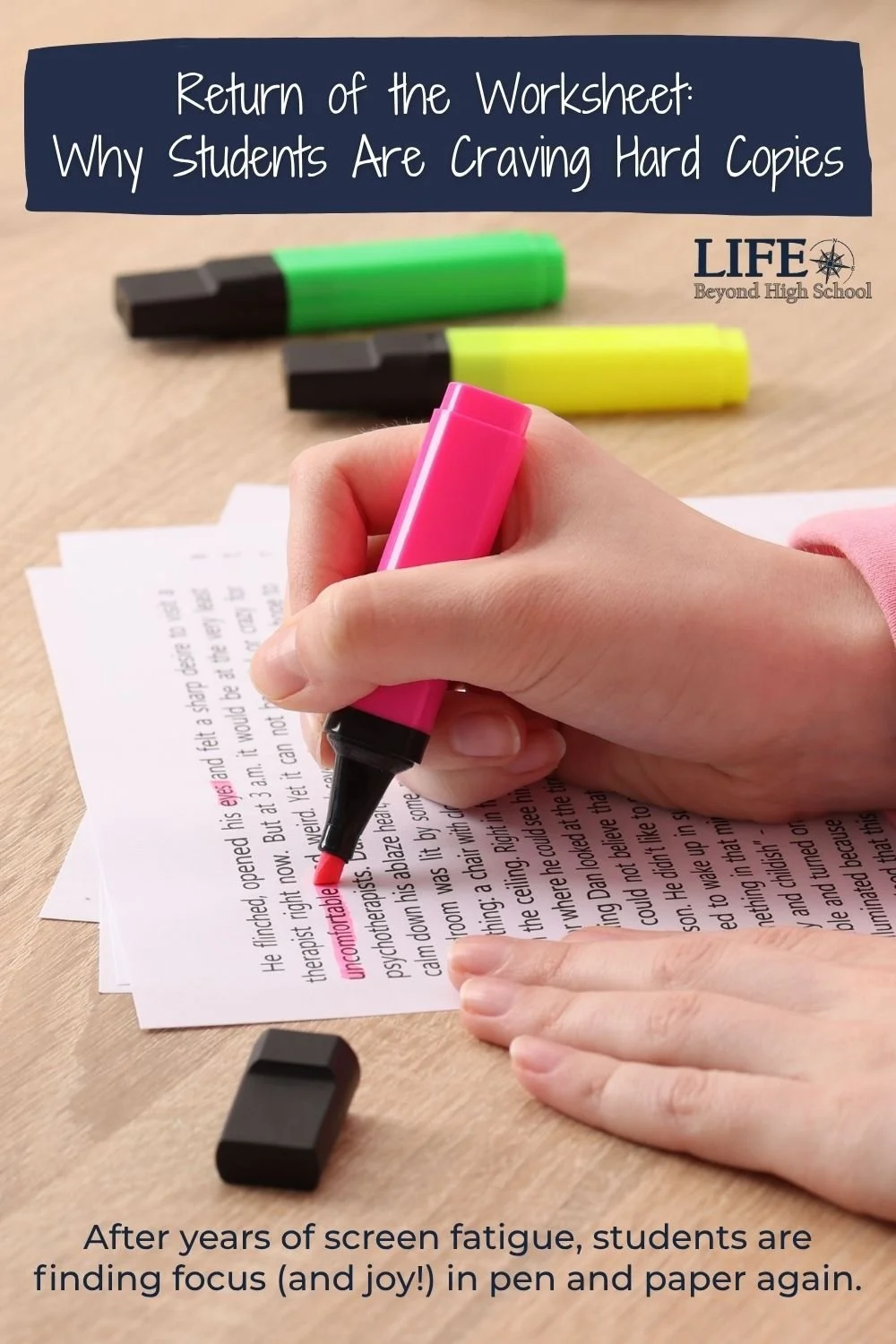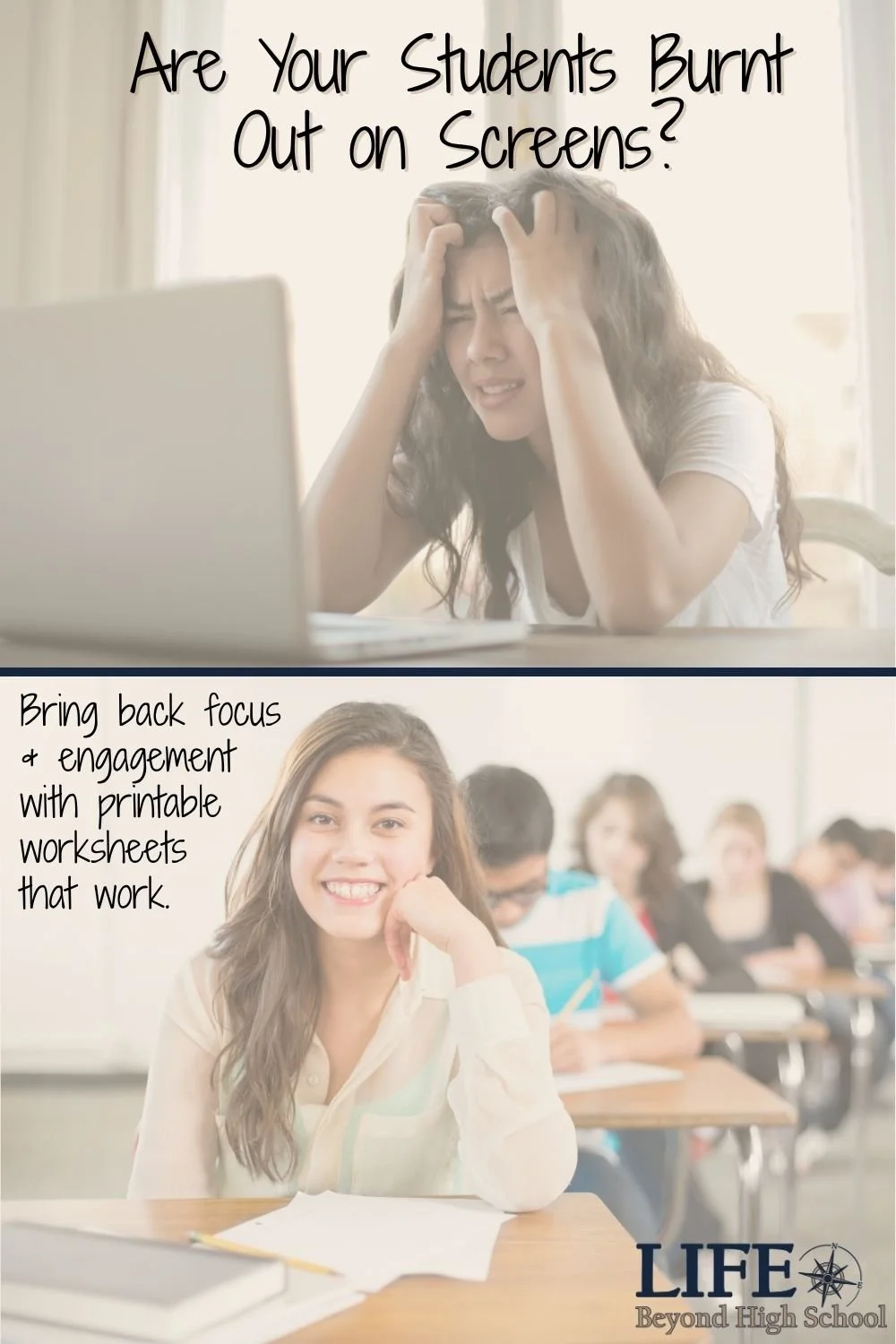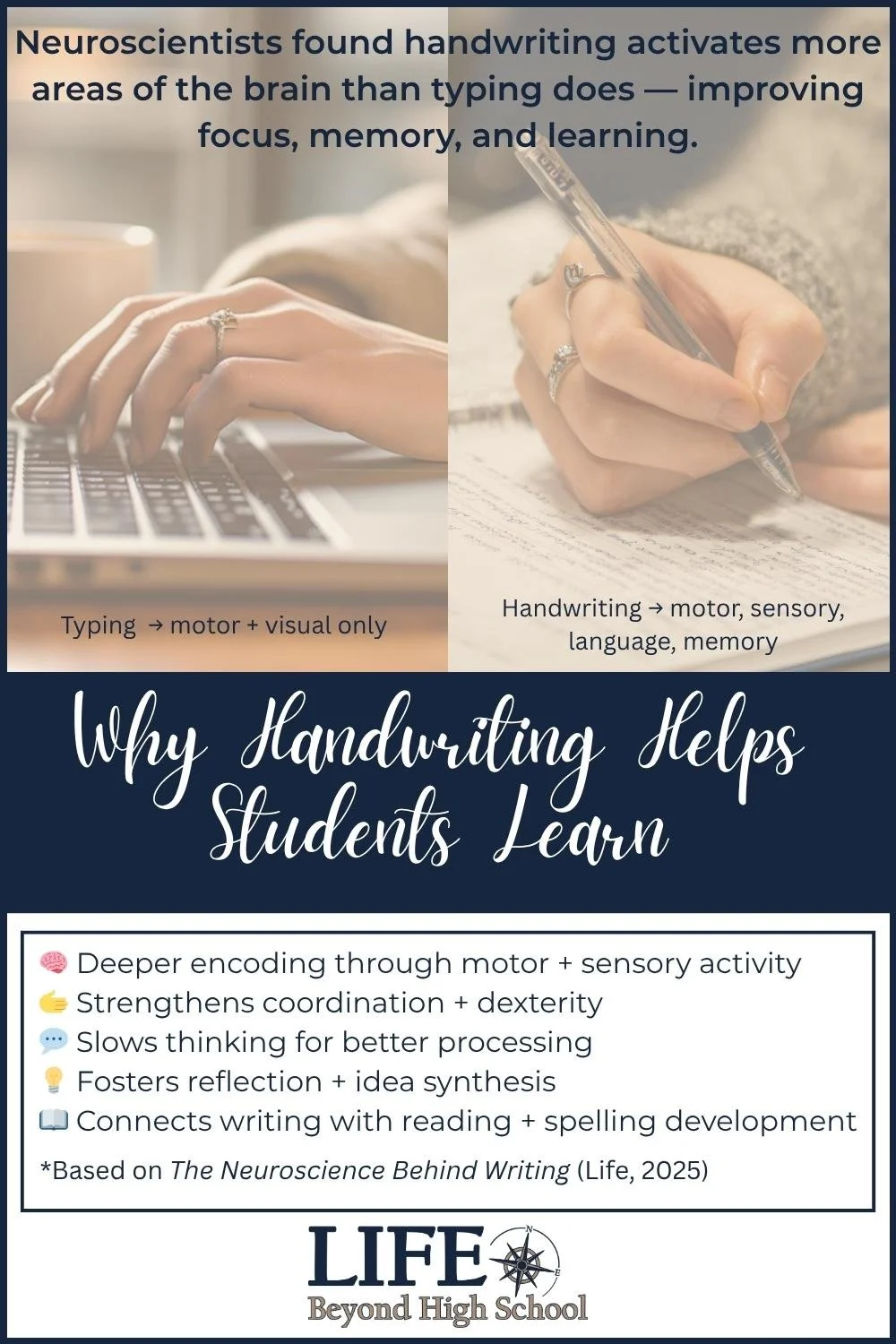Return of the Worksheet: Why Students Are Craving Hard Copies
Remember when we thought worksheets were dead? Turns out, they just needed a comeback tour!
After years of all-digital everything, I’ve found that students are rediscovering the joy of paper.
One day, early in this realization, I handed out a stack of printed job-scam ads for students to mark up. You’d have thought I was handing out puppies instead of paper. Within seconds, highlighters were flying, pens were scribbling, and red flags were being flagged right and left.
That’s when it hit me: students are craving printable worksheets again (and for good reason!).
The Digital Overload Is Real
When I first started teaching, there was a big push to go paperless. I was part of a 1:1 rollout. My classroom had a COW (Computers on Wheels). We piloted iPads. SMART Boards were all the rage. We thought we were so fancy with Hapara and cloud storage. Everything was digital all the time, and worksheets went the way of the dinosaurs.
Then came COVID, and everything moved online. Zoom, digital portfolios, escape rooms, and Google Docs galore. We were doing anything we could to engage teenagers through a screen.
But now? The pendulum is swinging back.
Over the last couple of years, my students have shown clear signs of burnout. They spend all day on their phones, switch between tabs like Olympic athletes, and then come to class for . . . you guessed it . . . more screen time. It’s no wonder they groan when I say, “Open your laptops.”
Many of my students also struggle with executive functioning. They get sidetracked, overwhelmed, or lost in a sea of tabs (bad tabits, anyone?). When we work with paper, I can have them clear their desks, grab one highlighter, and focus on a single task. It’s calmer, more productive, and a lot less overwhelming.
Pen and paper might be the breath of fresh air your students need!
Why Paper Can Still Be a Win
Research supports what we’re seeing in classrooms: handwriting activates more areas of the brain and supports stronger learning retention than typing does. One 2025 study published in Life found that writing on paper engages a broader network of brain regions involved in motor, sensory, and cognitive processing. Typing, by comparison, engages fewer neural circuits, resulting in more passive cognitive engagement.
Simply put, paper slows students down—in a good way. They think more carefully, focus longer, and remember better.
And honestly, I’ve noticed another benefit that no study can quite capture: camaraderie. When everyone is working on the same worksheet, students are literally and figuratively on the same page. There’s no juggling of tabs or tech issues, just shared focus and discussion.
When (and How) Worksheets Work Best
Now, don’t get me wrong. I’m not saying we should toss our Chromebooks out the window. I still love digital tools. But I’ve found that printable worksheets shine when students need to analyze, annotate, or compare information.
That same Life study reinforces what I see daily: handwriting supports deeper cognitive processing and stronger focus, especially during activities that involve critical thinking or problem-solving. In other words, the tasks that ask students to interact closely with content are the ones where paper has a real advantage.
Here’s how I use them in my classroom:
Highlighting and annotating: When students analyze job postings, housing ads, or credit card offers, they love being able to circle, underline, and highlight key information.
Comparing information: When we look at bank accounts or loan options, students like to fill out hard copy tables. Writing helps them see patterns they might miss on a screen.
Hybrid lessons: I still use tools like Zillow or CareerOneStop, but students collect information online and summarize their findings on paper. It bridges both worlds beautifully.
Visual focus: A printed page eliminates distractions. There’s no temptation to wander off into the internet or a chat window.
What Makes a Worksheet Work
Not all worksheets are created equal. Here’s what I’ve learned about designing ones that students actually enjoy:
Include an artifact. Use a real-world text or visual, like a lease, ad, or sample pay stub, for students to mark up.
End with reflection. Ask an opinion or “what would you do?” question to spark conversation.
Keep it interactive. Replace long writing sections with circling, checkboxes, or color coding.
Make it clean. Uncluttered design, clear directions, and a little white space go a long way.
And if your students are like mine, you’ll see instant engagement the moment the papers hit their desks.
Take a little screen break with some good old fashioned worksheets.
Common Teacher Questions
Here are a few common questions I hear from teachers (and what I’ve found works in my classroom):
“My district pushes digital-only.”
Totally fair. You can still print small sets for annotation, group work, or sub plans. Even limited paper time makes a difference.
“I don’t have time to make worksheets.”
Understandable! That’s exactly why I design ready-to-use printable worksheets and life skills lessons you can grab and go.
“Aren’t worksheets just busywork?”
They can be, but they don’t have to be. When worksheets invite analysis, reflection, or problem-solving, they become active learning tools.
Printable Worksheets for Real-World Learning
If you’re intrigued by the idea of bringing back paper, here are a few favorites your students might love:
Freebies: Try one of my free printable activities that build real-world literacy. In Scholarship Savvy, students analyze authentic scholarship listings to identify eligibility requirements and key details. In Reading and Signing a Lease, they analyze a sample rental agreement to spot important terms and red flags. Both activities ask students to engage directly with the document, questioning, highlighting, and annotating as they make sense of real-world adulting paperwork.
Career & Housing Scavenger Hunts: Visual, engaging, and perfect for helping students research jobs or apartments.
Job Searching Lesson: Includes my favorite Job Scams Worksheet, where students identify red flags in real-world ads.
These printable worksheets are perfect for special education, life skills, transition, and adult education classes, and they’re no prep, no stress.
Studies show learning benefits from integrating handwriting in the classroom.
Finding Balance in a Screen-Saturated World
To bring it all home: worksheets aren’t a step backward. They’re a step toward balance.
Students don’t necessarily need less technology. They need the right mix of tools that help them focus, reflect, and learn deeply. Printable worksheets do exactly that.
In a world flooded with screens, paper feels fresh again, and when paired with real-world, opinion-based questions, it’s more powerful than ever.
So go ahead: print that page and hand out those highlighters!



